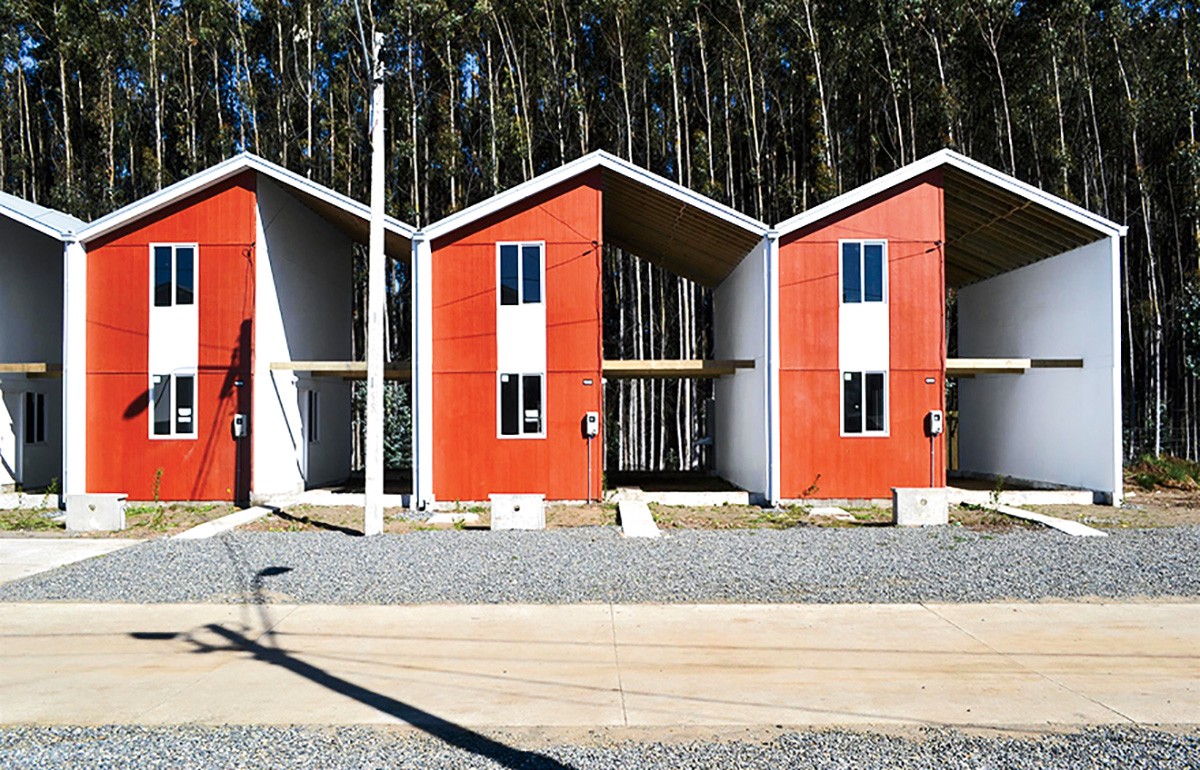Over the past seven years, Hugo Anziani purchased his first home and got a divorce. The industrial maintenance technician, 55, watched his two children move in with their mother, and welcomed back his high school-age son after he butted heads with the mother’s new boyfriend. He added a room to his two-bedroom duplex and enlarged the dining room, which he hopes will inspire his daughter to visit more often. With some leftover vinyl siding, he built a feline-size house for his three Romano cats.
Anziani lives in Punta del Sol, a private, government-subsidized housing development in Rancagua, Chile, designed with the simple but novel premise that a house can grow with a family. All 126 of the homes at Punta del Sol are made to be expanded and personalized over time by their residents — an approach its designer, Elemental, the Santiago-based “do tank” led by architect Alejandro Aravena, call “incremental.” As family dynamics require and financial circumstances permit, a duplex like the one Anziani lives in, originally 680 square feet, can grow to nearly 800 square feet. Interior finishes are mostly left to the residents.
That general adaptability is a testament to how Punta del Sol has recast the market-based social-housing paradigm in Chile. The cost to build each unit falls within the modest budget the government allocates for individual dwellings. And yet the units exceed the government’s minimum floor area requirements—a condition of subsidies that most housing developers only just meet, as they lack the incentive to do otherwise. For the working-class residents, who are given full ownership after an initial down payment, the future modifications are an investment akin to a mortgage.
Aravena, 49, has earned significant attention among the architecture elite for his focus on social housing. In the past year alone, he has curated the Venice Architecture Biennale and won the highest honor in the architecture field, the Pritzker Prize. Aravena’s win is an acknowledgement of a renewed social engagement among designers in the face of urgent challenges in urban housing: More than aloof dreamers, Aravena and peers such as Anne Lacaton, Jean-Philippe Vassal, and Alfredo Brillembourg are imaginative mediators.
When I visited Punta del Sol one afternoon this past April, I traveled an hour south of Santiago until I reached two clusters of three-story buildings, one painted deep crimson and the other white. I met Anziani on the street, where he explained that the hues distinguish the preferences of the two condominium organizations’ respective residents, as determined by popular vote. “I chose ‘natural,’” he remarked, referring to one of three color options, “but 90 percent wanted white.”

The fragile balance of individual freedom and collective responsibility that characterizes life in Punta del Sol is reflected in the development’s facades. While the houses adhere to a standardized, repetitive design, Elemental created alcoves in each home’s front facade that can be decorated as the residents wish (within the community’s self-defined design guidelines).
As Anziani walks me through the rows of buildings, gesturing at the alterations made by residents themselves, his statements form an irregular staccato of “original” and “new.” He grumbles at the sight of an ad hoc shed in front of a neighbor’s home. “It is not easy to live together,” Anziani confesses.
Overall, though, Anziani is happy with his home. Out the flimsy windows, beyond the highway that creates a low din, are the Andes. The mountains are extraordinary, and nearly every room in Anziani’s house has a view of them, including the dining room, where he invites me to sit. “My life changed when I got this house,” he says, as I stir a cup of instant coffee. “It’s a gift.” A few minutes later, after re-evaluation, he amends his statement. “It should be a right, not a gift.”




